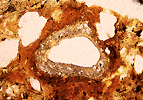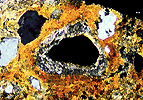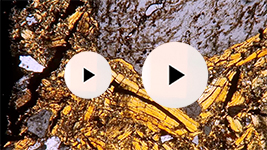
4. Pedofeatures

They are recognised by a concentration of a grain size fraction related to a mechanical transport.
The most important criteria to describe these textural pedofeatures are: texture and internal fabric
The following classes of particle sizes are proposed to describe textural pedofeatures:
![]() Clay
Clay
As a result of their platy habit, the clay
particles tend to be oriented parallel to each other. The result
is that when they are crossed with the polarised light, the optical
phenomena of every individual particle are added to those of the
next particle, and the oriented clayey domain acts as if it were
a single crystal,
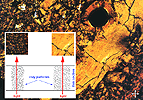
showing different optical properties: interference colour, extinction phenomena,
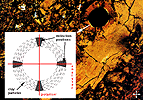
(the extinction pattern is a measure of the degree of orientation:

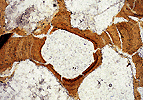 ,
,
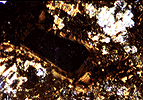
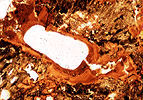 ),
),
optical continuity, etc., which make it possible to make interpretations about the atmosphere in which the particles have been distributed, as well as the way they accumulate.
Two types of clay accumulations are distinguished according to their texture:
![]() Limpid clay. This is a uniform clay
without inclusions of micro-particles.
Limpid clay. This is a uniform clay
without inclusions of micro-particles.

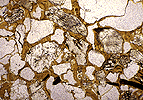
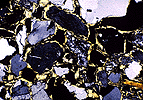
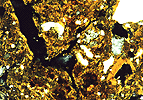
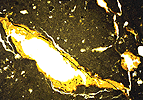
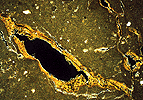
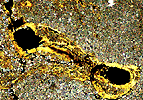
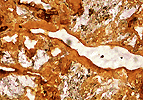
![]() Impure clay. Composed of clay that contains
fine silt-size particles.
Impure clay. Composed of clay that contains
fine silt-size particles.
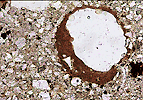
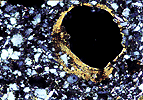
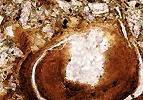

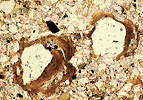
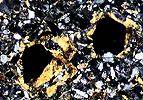
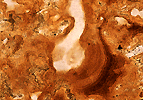
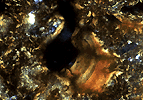
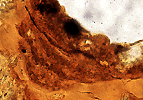
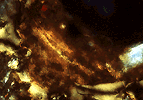
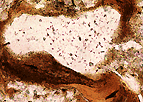
![]() Silt. Consisting of silt-size particles.
Silt. Consisting of silt-size particles.
![]() Sand. Consisting of sand-size particles.
Sand. Consisting of sand-size particles.
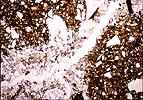
![]() Clay and silt. Formed of clay- and silt-size
particles in variable proportions.
Clay and silt. Formed of clay- and silt-size
particles in variable proportions.
![]() Unsorted. Consisting of variable proportions
of sand, silt and clay.
Unsorted. Consisting of variable proportions
of sand, silt and clay.
